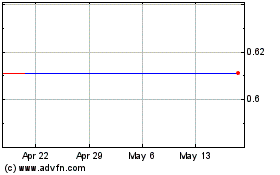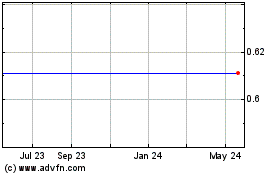2012 hasn’t been a very easy year for energy ETFs in any segment
of the important industry. Rough trading in the oil market has kept
that part of the market in the red, while incredible improvements
in fracking have depressed natural gas prices to historic lows as
well.
Meanwhile, the extreme weakness in oil and natural gas has also
led to severe slumps in the more specialized corners of the energy
market to start the year. This has been readily apparent in both
those in the ‘clean’—such as solar and wind—and firms in the
‘dirty’ – such as coal—side of the power production picture, but
has particularly been true in the coal market in recent weeks (see
Three ETFs for the Energy Efficiency Boom).
The coal industry has been greatly impacted by a confluence of
events to start the year, all of which have led to a bearish
outlook for the key energy producing space. Coal is often used as a
power plant input, but mild weather across much of the nation has
kept this in check for the better part of the year.
Not only that but cheap and abundant natural gas has become
relatively competitive with coal, thanks to both the slump in
prices and the fact that gas is generally regarded as a cleaner
fuel source than coal. In fact, coal use in the U.S. during the
first quarter was the lowest for the time period since 1988,
according to the EIA.
Additionally, a slowdown in Europe has also kept electricity
demand—and thus coal usage—at the bottom end of the range, while a
similar situation could be brewing in the key market of China as
well. This is especially true in terms of a construction slowdown
which could reduce coal demand as a steel input, creating a very
negative international outlook for the product.
This confluence of events has pushed many coal companies to the
brink in recent months and has apparently knocked Patriot
Coal (PCX) over the edge. In fact, earlier this week, the
once mighty coal company—which was a $24 stock last July—was pushed
into bankruptcy, filing for Chapter 11 protection, pushing the
company to a 99% loss in the past 12 month period.
Now investors are beginning to worry about a number of other
companies in the broad coal sector, wondering who might be next to
fall in the space. Top companies in the segment have all been
losers over the past five days while a few have lost more than 10%
in the trailing one week period (see Oil Bull Market Is No Place
For MLP ETF Investors).
Clearly, it isn’t going very well for the coal industry at this
time and this trend could continue should more companies face
trouble paying their bills. This may be the case if weakness reigns
in the international markets or low growth stays in the U.S., or
even if natural gas prices remain subdued. Any of these factors may
keep coal prices depressed and thus could create pain for those
holding onto stocks in the space.
For these investors who are dead set on holding on to coal, an
ETF approach could be the way to go instead. This basket investment
looks to avoid any sort of PCX debacle, helping to spread the risk
around a host of companies instead of concentrating it into a few
high risk firms.
After all, coal as an industry is not going anywhere at any
point in the near future. Coal provides about half of all U.S.
electricity while the figure stands at roughly two-thirds for
China’s power consumption. Meanwhile, total consumption is expected
to reach close to 450 billion cubic feet per day by 2030, close to
150 bcf/d more than today.
Given these trends, some bold investors (with a very
long time horizon) could try to make a play on the broad
coal space in the near future. However, with the risks still in the
space, a look at either of the two coal ETFs on the market could be
the way to go instead, especially if another Patriot Coal situation
hits in the coming days or weeks:
Market Vectors Coal ETF (KOL)
This product from Van Eck tracks the Stowe Coal Index which is a
rules-based, modified cap weighted, float adjusted index of global
companies in the coal industry. Currently, the ETF consists of
about 30 securities in total charging investors 59 basis points a
year in fees.
The portfolio is heavily skewed towards mid caps as these
securities make up about 50% of the portfolio, leaving just 30% for
large cap stocks. From a country perspective, the U.S. makes up
about 40% while China (20%), and Indonesia (14%) round out the top
three (read Does Your Portfolio Need A Coal ETF?).
From a year-to-date performance look the fund was decimated,
losing 31% since the start of January. Things haven’t been much
better from the one year time frame as the fund is down about 50%
in that period. However, the PE on the fund is now below 9 while
P/S is below one and the dividend yield is approaching 3.8%,
suggesting decent values in some of the underlying securities.
PowerShares Global Coal Portfolio (PKOL)
For another way to play the global coal market, investors have
PKOL, a product that tracks the Nasdaq OMX Global Coal Index. This
benchmark consists of globally traded securities of the largest
firms engaged in the exploration for and mining of the potent power
source. Currently, the basket consists of about 30 securities in
total while charging investors 75 basis points a year in fees (see
Two Energy ETFs Holding Their Ground).
Much like its counterpart, the product has a focus on mid cap
securities although PKOL holds almost 40% in large caps as well.
The PowerShares fund also has the U.S. as its top country from a
national perspective, although China is only a few basis points
behind for the number one spot, coming in at 24% of the total.
Beyond these two, the top five is rounded out by Indonesia,
Australia, and Canada, suggesting a decent mix between developed
and emerging nations.
Performance has also been pretty bad in this fund as PKOL has
lost 28% so far in 2012 while it has slumped roughly 45% over the
past 52 weeks. Valuation metrics are also favorable for this fund
as the PE is at 10 while the P/S is just over 1.05. Meanwhile, the
dividend yield is at 3.4%, suggesting that it could be a yield
destination as well.
Coal ETF Future
Clearly, both of the funds have been severely beaten down so far
in 2012 and haven’t really stopped their slide as of yet. This
presents investors with a potential ‘falling knife’ situation
implying that this could be the bottom, or the industry could have
further to fall as well (PUW: Crushing The Clean Energy ETF
Competition).
Either way, both PKOL and KOL are trading at tantalizing levels
given the vital nature of coal to the long term energy picture.
While both could definitely fall further, one has to believe that
the entire coal industry will not collapse meaning that either of
these funds could be worth a closer look in the months ahead.
Want the latest recommendations from Zacks Investment Research?
Today, you can download 7 Best Stocks for the Next 30
Days. Click to get this free report >>
Follow @Eric Dutram on Twitter
MKT VEC-COAL (KOL): ETF Research Reports
(PCX): ETF Research Reports
PWRSH-GLBL COAL (PKOL): ETF Research Reports
To read this article on Zacks.com click here.
Zacks Investment Research
Want the latest recommendations from Zacks Investment Research?
Today, you can download 7 Best Stocks for the Next 30 Days. Click
to get this free report
Patriot Coal Corp. (NYSE:PCX)
Historical Stock Chart
From Jan 2025 to Feb 2025

Patriot Coal Corp. (NYSE:PCX)
Historical Stock Chart
From Feb 2024 to Feb 2025
